CARUS
Tango meets Classic. Carus crossover
Donizetti’s Requiem & Italian sacred music in the 19th century

C Carus
Departing this world. On the passing of Clytus Gottwald
Highlights of choral music

Tango meets Classic. Carus crossover
Donizetti’s Requiem & Italian sacred music in the 19th century

C Carus
Departing this world. On the passing of Clytus Gottwald
Highlights of choral music
Felix Mendelssohn Bartholdy
Hymn of Praise. Symphony cantata
Arrangement for chamber orchestra
arr. Joachim Linckelmann
Soli SST, Coro SSAATB, Fl, Ob, Clt, Fg, Cor, Tr, Trb, Timp, 2 Vl, Va, Vc, Cb, [Org] / 62 min Carus 40.076/50
Giuseppe Verdi
Messa da Requiem
Arrangement for chamber orchestra
arr. Joachim Linckelmann
Soli SMsTB, Coro SATB, Fl, Ob, Clt, Fg, Cor, Tr, [4 (2) Tr da lontano], Trb, Timp, Gran Cassa, 2 Vl, Va, Vc, Cb / 90 min Carus 27.308/00
Anton Bruckner
Te Deum
Arrangement for brass quintet and organ
arr. Johannes Ebenbauer
Soli SATB, Coro SATB, 2 Tr, Cor, Trb, Tb, Org 25 min
Carus 27.190/50
• excellent sounding arrangements
• for small ensemble or organ
• adapted by experienced arrangers
• matches the vocal scores and choral scores of the original version
• based on the Carus Urtext editions
• many standard works from the choral repertoire e.g. by Bach, Haydn, Beethoven, Brahms, Schubert, Mendelssohn, Rossini, Dvořák, Bruckner, Puccini, and Verdi
www.carus-verlag.com/great-choral-works-in-small-scorings
On May 30, 1723, which was the first Sunday after Trinity, the newly appointed Thomaskantor, Johann Sebastian Bach, conducts his first cantata at morning service in Leipzig’s Nikolaikirche. The work in question is Die Elenden sollen essen (All the starving shall be nourished) BWV 75. More than just a premiere, it is the beginning of an astonishingly creative period that sees Bach compose a masterpiece every week until 1726. And that is by no means all: in these first three years in Leipzig, he wrote the St. John Passion BWV 245.1 (1724) and BWV 245.2 (1725), the Magnificat BWV 243.1 (1723), the Sanctus of the later B minor Mass BWV 232.1 (1724), the Easter Oratorio BWV 249.3 (1725), and many other vocal works, not only for Sundays but also for holy days during the week. And if that were not enough, he also polished off secular occasional works. Absolutely incredible!
Since the rediscovery of Bach’s vocal music by Zelter’s Sing-Akademie zu Berlin – culminating in Mendelssohn’s legendary performance of the St. Matthew Passion in 1829 – Bach’s vocal works have formed the cornerstone of our musical world, even touching cultures outside our Western Christian tradition. So it seems appropriate to commemorate this somewhat “different” anniversary with a concert, whether featuring works

from Bach’s first year in Leipzig, his “trial” cantatas for Quinquagesima in 1723, or even a concert that juxtaposes works from the first Leipzig annual cycle with earlier or later compositions. Whatever one chooses, you simply can’t go wrong with Bach! Suggestions for a concert program can also be found in the CARUS Blog.
And, of course, we are busily preparing for a cornucopia of composer jubilees in 2024. There really is a suitable jubilarian for every choir. We have taken this opportunity to further expand our programs. A roadmap of the vocal works of Bruckner, one of the most prominent names celebrated in 2024, can be found on pp. 20/21.
Uwe Wolf Head of programPS: Did you know that there is an overview of the liturgical ordering of Bach’s cantatas for each annual cycle in the Carus webshop? The calendar for 1723/24 with the corresponding dates for 2023/24 is enclosed with this mailing.


On October 16, 2022, at the closing concert of the Heinrich Schütz Music Festival in Torgau, Saxony, the International Heinrich Schütz Prize 2022 was awarded to Carus and Bärenreiter for their publishing services to the works of Schütz. Carus founder Günter Graulich received the prize, which is both an honor and an incentive for Carus!


300 years Bach in Leipzig. With Bach’s inauguration in 1723 a great series of cantatas and passions was born. We look forward to celebrating the 300th anniversary of many exiting works in the coming years (see p. 6ff. and the calendar of the 1723 cantata cycle enclosed). Furthermore, the anniversaries of two other important choral composition are coming up soon: May 7, 2024 marks the 200th anniversary of the premiere of Ludwig van Beethoven’s 9th Symphony. And on May 22, 2024 it will be exactly 150 years since Giuseppe Verdi’s Requiem was first performed.
All compositions written for the project «Organ Music in Times of Corona» were performed on September 18, 2022 in the presence of the Minister of State for Culture and Media, Claudia Roth, representatives of the German Music Council, the German Bishops’ Conference and the Protestant Evangelical Church in Germany, . The new compositions for solo organ published by Carus-Verlag creatively reflect the Corona era (Carus 18.220).
Information on the project: www.orgel-corona.de

After the 2020 award for the edition of Beethoven’s Christus am Ölberge (Carus 23.020), Carus has now been honored for the edition of another important oratorio. The publication of César Franck’s oratorio Les Béatitudes (Carus 10.393), edited by Hans Christoph Becker-Foss and Thomas Ohlendorf, convinced the jury. The Best Edition prize is awarded by the German Music Publishers’ Association for outstanding sheet music editions and music books.


Pablo Casals (1876 – 1973)
50th anniversary of death 2023
Sergei Rachmaninow (1873 – 1943)
150th birthday 2023
Max Reger (1873 – 1916)
150th birthday 2023
Anton Bruckner (1824 – 1896)
200th birthday 2024
Gabriel Fauré (1845 – 1924)
100th anniversary of death 2024
Giacomo Puccini (1858 – 1924)
100th anniversary of death 2024
Giacomo Carissimi (1605 – 1674)
350th anniversary of death 2024
Arnold Schönberg (1874 – 1951)
150th birthday 2024
April 25 – 30, 2023
Istanbul, Turkey
IFCM World Symposium on Choral Music
November 1 – 3, 2023
Carus-Verlag Stuttgart, Germany Choratelier kompakt
It is wonderful – finally, not only are concerts being held again, it is also possible to participate in face-to-face workshops and gain new inspiration! In February 2023 we were guests at the ACDA National Conference in Cincinnati. And in autumn 2022 we at Carus opened our doors to a full house for the “Stuttgart Choratelier”. It was a week full of sound, packed with workshops and lots of singing. Many thanks for the wonderful encounters! We are currently planning a “Choratelier kompakt” for autumn 2023. In the picture: Simon Halsey inspired us with his presentation of Elgar’s Dream of Gerontius
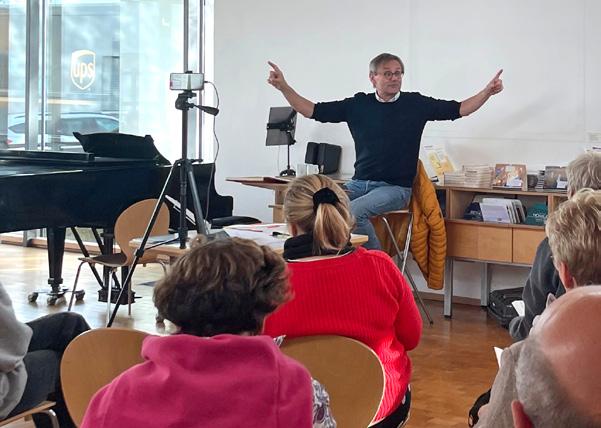
The German Music Council included six young choral conductors into its support programme "Forum Dirigieren". Congratulations! They all received a voucher for sheet music from Carus for building up their music library. From left to right: Nico Köhs (HfMT Cologne), Bobin Kim (HfMDK Frankfurt), Heide Müller (HfM Detmold), Jurgita Cesonyte (HfM Dresden), Jonas Kraft (HMT Leipzig) and Lucia Birzer (HfM Weimar).
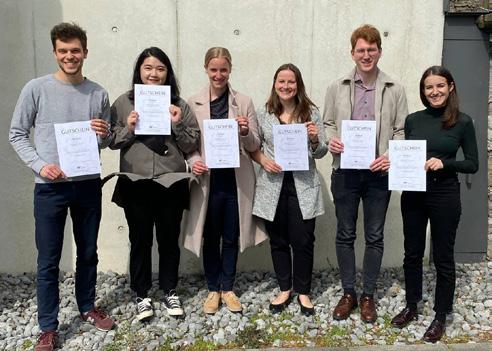
J. S. Bach. The Sacred Vocal Music Complete Edition in 23 volumes edited by Ulrich Leisinger and Uwe Wolf in collaboration with the Bach Archive Leipzig Study scores in a reader-friendly format, also suitable for conducting, in 3 high-quality slip cases

Carus 31.500
599 € NEW PRICE: 349 €
Magnificat in D major BWV 243.2 (243) (ger/en)
Carus 31.243, full score (also ), vocal score, choral score±, complete orchestral parts practice aid available
For obvious reasons, anniversary celebrations usually look back to the year of a composer’s birth or death. From our perspective, however, Johann Sebastian Bach’s 300th birthday in 1985 now lies several decades in the past, while the memory of the 250th anniversary of his death in the year 2000 is also starting to fade. And we still have quite a few years to wait before embarking on the 350th birthday celebrations in 2035. The only notable recent milestones have been connected to three outstanding instrumental works from Bach’s time in Cöthen (all of which were dated by the master himself), namely the 300th anniversaries of the Sonatas and Partitas for Solo Violin (1720), the Brandenburg Concertos (1721) and the Well-Tempered Clavier (1722). In 2023, however, we remember a very special event that was to represent a turning point in Bach’s creative and compositional work.
Die Elenden sollen essen (All the starving shall be nourished) Cantata for the 1st Sunday after Trinity BWV 75 (ger/en)
Carus 31.075, full score (also ), vocal score, choral score±, complete orchestral parts
Since 1985, Bach’s lifespan from 1685 to 1750 has run in step with our own age at an interval of precisely 300 years, creating an ideal framework to trace in detail his musical development as expressed through individual works. In 2023 comes a major turning point when we commemorate the beginning of Bach’s work as cantor at Leipzig’s Thomaskirche in the spring of 1723. This not only marked a new epoch in his creative life, which lasted a full 27 years, but also heralded his single most productive phase. This is especially true of the vocal music and, in particular, the cycles of cantatas written largely in the early years at Leipzig.

It is worth remembering that about a hundred years ago, the significance of Bach’s arrival at the cantorate could not be as carefully appraised as it is today. For it is due to the labor of modern scholars that, for the first time, we largely understand the history

and sequential ordering of the vocal works composed in Leipzig. Most importantly, the cantatas can now be assigned to one of several annual cycles. Thus, especially for the first Leipzig years of 1723–1725, it is now possible to draw up an essentially complete calendar for the 300-year anniversaries.
Bach’s inaugural work as Thomaskantor was the cantata Die Elenden sollen essen BWV 75 (All the starving shall be nourished, Carus 31.075) for the 1st Sunday after Trinity on May 30, 1723. Two days later he officially began his duties. Three months earlier, on Quinquagesima Sunday, February 7, 1723, the hopeful candidate had successfully passed the preliminary audition for the cantorate with a performance of the two cantatas Jesus nahm zu sich die Zwölfe BWV 22 (Jesus calling then the Twelve to him, Carus 31.022) and Du wahrer Gott und Davids Sohn BWV 23 (Thou very God and David’s Son, Carus 31.023). Bach quickly became the favorite to succeed the previous Thomaskantor Johann Kuhnau, who had died in 1722 after holding the post for 21 years (and previously serving as organist at the Thomaskirche).
Bach’s regular Leipzig cantata cycles began with the 1st Sunday after Trinity, which was the start of the school year, continuing each Sunday while also marking the feast days of the Virgin Mary, the Apostles, and the Reformation, as well as the three holidays of Christmas, Easter and Pentecost. Reviewing the demanding Leipzig performance calendar of the 1720s at a distance of three centuries, we are astounded by the ceaseless industry of the Thomaskantor, who produced new scores week after week. The numbers of vocal works written in the first calendar years speak for themselves: 39 (1723), 56 (1724), 40 (1725) and 44 (1726–1727).
It should be noted that in his first year as cantor, Bach occasionally lightened a heavy workload by resorting to cantatas he had brought with him from Weimar. For example, for the 3rd Sunday after Trinity in 1723, he selected the cantata Ich hatte viel Bekümmernis BWV 21 (Lord my God, my heart and soul were sore distressed, Carus 31.021), composed in 1714. In many such cases, however, he still had to rearrange or rework these Weimar cantatas to reflect the performance conditions in Leipzig. In a further effort to make use of older works, he turned secular cantatas written during his time in Cöthen into sacred parodies by
Since the founding of Carus-Verlag, Johann Sebastian Bach’s music has played an important role. We have published all of Bach’s sacred vocal music in modern Urtext editions together with performance material. The Complete Edition of all scores in three high-quality slip cases is also available. The series will be continued with editions of selected secular cantatas.
Urtext for historically informed performance
Edited in collaboration with the Leipzig Bach Archive

musicologically reliable editions for the practical pursuit of music, taking into account the most current state of Bach research
informative forewords on the work’s history, reception, and performance practice and Critical Reports
systematic revision of older editions – both music and text sections – where there have been new discoveries about the sources or from historically-informed performance practice
Ehre sei Gott in der Höhe (Glory to God in the highest) Reconstruction by Pieter Dirksen BWV 197.1 (197a) (ger/en)
A convincing version of the Christmas Cantata – with one of Bach’s best-known choruses as the prominent opening chorus – the Gloria from the B Minor Mass – and plausible solutions for the other sections missing in the autograph.
Carus 31.402, full score (also ), vocal score, choral score±, complete orchestral parts
complete performance material: full score, study score, vocal score, choral score, and orchestral parts
Also available: innovative practice aids (carus music, the choir coach) and and large print editions of the most important works
Bach vocal. Ein Handbuch ed. Christoph Wolff
Renowned Bach scholar Christoph Wolff has compiled the basic information on all of Johann Sebastian Bach’s vocal works in a compact, clear form. Alongside titles, date of composition, librettists, and scoring, for each individual movement the scoring, text incipit, and meter are given. Different versions have been evaluated, as well as the relationships of the works to each other (the parody models).
Carus 24.073, in German, 272 pages, DIN A5, ISBN 978-3-89948-423-6 ( PDF, ePUB or MOBI available)
introducing new texts. Examples here are the cantatas BWV 66 (Carus 31.066), 134 (Carus 31.134), 173 (Carus 31.173) and 184 (Carus 31.184) for the minor feasts of the second and third days of Easter and Pentecost in 1724.
The data clearly shows a marked decline in productivity – apparently according to plan – from mid-1725 onward. It seems that Bach had decided relatively early to abandon the practice of writing short-lived cantatas to be heard only once, instead creating a solid repertoire of pieces. To this end, he built up a body of work in his early years as Thomaskantor from which he could then draw time and again. This notion of a repertoire of cantatas is a clear departure from the approach of contemporaries such as Christoph Graupner and Georg Philipp Telemann, who left behind vast œuvres of more than 1,400 and 1,750 cantatas respectively, or Gottfried Heinrich Stölzel, who wrote at least 12 cantata year-cycles. Bach was truly pioneering in his efforts to shape the still young genre, developing it into the singular artwork we still cherish today. In this respect, the corpus of cantatas he created may be easily considered to eclipse all similar bodies of work.
Alles, was von Gott geboren (All those born of God)

Reconstruction by Klaus Hofmann BWV 80.1 (80a) (ger/en)
Only the text of this Oculi cantata survives today. However, the early version of the cantata can easily be extrapolated from the two later versions. This first published reconstruction to date, by the renowned Bach scholar Klaus Hofmann, represents a welcome addition to the small repertoire of Bach cantatas for Passion Sundays.
Carus 31.401, full score (also ), vocal score, choral score±, complete orchestral parts
The Leipzig cantatas are all of a uniformly high standard. Moreover, works such as Herr, gehe nicht ins Gericht mit deinem Knecht BWV 105 (Lord, be not too quick to judge, Carus 31.105), Schauet doch und sehet, ob irgendein Schmerz sei BWV 46 (Look ye then and see now, Carus 31.046), Es ist nichts Gesundes an meinem Leibe BWV 25 (There is naught of soundness within my body, Carus 31.025) or Warum betrübst du dich, mein Herz BWV 138 (What is it troubles thee, my heart, Carus 31.138) – to pick only four examples from Cycle I of 1723–1724 – illustrate the diversity of musical form and marvelous expressive depth of Bach’s vocal works.
This is even more true of Cycle II, which consists entirely of new works, thus making the school year 1724/25 the most prolific of Bach’s life. Beginning with O Ewigkeit, du Donnerwort BWV 20 (Eternity, thou thundrous word, Carus 31.020), the Thomaskantor composed an uninterrupted series of 44 choral cantatas, based exclusively on chorale melodies and texts. For unknown reasons, this carefully laid-out cycle came to an abrupt end with Wie schön leuchtet der Morgenstern BWV 1 (How beauteous is the morning star, Carus 31.001), written for the Feast of the Annunciation on March 25, 1725.
After Easter 1725, Bach returned to the standard form of mixed cantatas based around Biblical texts, chorale verses, and other poetic elements – a format he maintained in later church years. But here, too, we often encounter surprising musical innovations such as the inclusion of extended concertante movements to open a work, also at times featuring (especially from 1726) obbligato organ. Finally, the ambitious cantata project begun in 1723 es-
sentially came to an end around 1729. Bach later composed only a handful of new cantatas, although he did take the opportunity to revise and improve older works when drawing on his cycles for church performances.
The arrival of Bach in Leipzig in 1723 not only launched his great period of cantata writing, but also provided an impetus to compose music for the High Feast days. The 5-part Latin Magnificat BWV 243 (Carus 31.243), which the Thomaskantor conceived for the Christmas Vespers service in 1723, was his first large-scale vocal work. This was followed by the St. John Passion “Herr, unser Herrscher” BWV 245 (Carus 31.245) for Good Friday Vespers in 1724, which he performed again the following year in a heavily revised version featuring the opening chorus “O Mensch bewein dein Sünde groß”. While the 300th anniversaries of these vocal works are just around the corner, we still have to wait some years before celebrating the creation of the St. Matthew Passion BWV 244 (Carus 31.244). Only fragments of the first version of this work from 1727 are available to us, and it was not in fact until 1736 that “the great Passion” (as it was known in the Bach family) received the final form we know today. The brilliant oratorical trilogy of works for Christmas, Easter, and Ascension were also written in the 1730s.
Despite the profusion of vocal music composed in 1723 and the years immediately following, we should not forget that the Thomaskantor remained true to his old habits. Alongside his church duties, he continued to write new works for organ and piano as well as chamber and orchestral music. Unfortunately, it is impossible to date these instrumental pieces as precisely as the vocal works that are so obviously tied to the church year. But perhaps this simply reminds us that while anniversaries serve to highlight various aspects of Johann Sebastian Bach’s œuvre, the survival and impact of his music is quite independent of any such ephemeral celebration.
Prof. Dr. Dr. h.c. Christoph Wolff is one of the most distinguished Bach researchers of our time. He is professor emeritus at Harvard University and was director of the Leipzig Bach Archive from 2001 to 2013.

Following the first Sunday after Trinity in 1723, Bach performed at least one cantata a week. The calendar with the performance dates 1723 and the corresponding dates for 2023 can be downloaded here.
While only a few of the instrumental and vocal parts from the 1724 version have survived, the semi-autographical copy of the 1739 score enables us to draw some limited conclusions on the 1724 score. The 1724 version was relatively similar to the 1749 version, but two of the texts were changed for the 1749 performance. Some evidence suggests that the wind instrumentation and other details also differed, but we are largely left to conjecture. Carus has separate performance material for a confirmed variation in the instrumentation in the 1724 version (movement 19/20 with 2 violas d’amore and lute instead of two violas con sordino and obligat organ; Carus 31.245/81 + 82). An overview of all the versions and their differences can be found in the preliminary material in the Carus full scores for the St. John Passion.
If in 2024 you want to perform the St. John Passion in a version close to that of 1724, the 1749 version with the original texts to movement 9 and movement 19/20 is recommended. For movement 9, the text can be found in full score’s appendix and in the vocal score. For movement 19/20 both text versions can be found one after another in the full score and vocal score. You can add the characteristic variation in the instrumentation to movement 19/20. Further reconstruction attempts lead unnecessarily away from the traditional musical text, without resulting in clearly audible differences and the certainty of actually creating a performance that is closer to the 1724 version.

Italy is generally recognized as the birthplace of opera, so it’s easy to overlook the important role that church music also played there. In fact, this was the bedrock upon which everything else could later develop. Carus editor Guido Johannes Joerg sheds light on an impressive tradition of sacred music.
Gioachino Rossini (1792 – 1868)
Petite Messe solennelle (lat)
ed. Klaus Döge
Soli SATB, Coro SATB, 2 Pfte, Armo
79 min
Carus 40.650, full score
(also ), vocal score, vocal score XL, choral score±, complete orchestral parts, practice aid
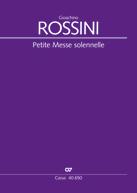
Due to the omnipresence of opera in Italian musical culture, it’s easy to overlook the country’s strong tradition of writing and performing sacred music. In the past, children’s musical education was mostly realized through church choirs and church musicians. Professional training took place at music schools which had often previously been church institutions. The earliest efforts of budding composers were sacred works – occasionally they even produced entire masses. And in many conservatories, the final assignment in a harmony and counterpoint course was to compose a mass. Some examples from the 19th century include Rossini and Bellini, who each composed several masses before attempting their first opera; Donizetti, who created several dozen sacred works while still living in Bergamo; and Verdi, Puccini or Catalani, who completed their studies with a mass.
Luigi Cherubini (1760 – 1842)
Requiem in C minor (lat)
ed. Wolfgang Hochstein
Coro SATB, 2 Ob, 2 Clt, 2 Fg, 2 Cor, 2 Tr, 3 Trb, Timp, Tamtam, 2 Vl, 2 Va, Vc, Cb / 46 min
Carus 40.086, full score (also ), vocal score, choral score± , complete orchestral parts, practice aid
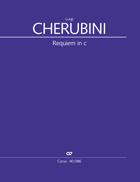
Giuseppe Verdi (1813 – 1901)
Messa da Requiem (lat)
ed. Norbert Bolin
Solo SMsTB, Coro SATB, Pic, 2 Fl, 2 Ob, 2 Clt, 4 Fg, 4 Cor, 4 Tr, 4 Tr da lontano, 3 Trb, Oficleide, Timp, Perc, 2 Vl, Va, Vc, Cb / 87 min
Carus 27.303, full score (also ), vocal score, vocal score XL, choral score±, complete orchestral parts, practice aid
Carus also offers two arrangements for chamber ensemble in order to perform the work in smaller settings (Carus 27.303/50 and Carus 27.308).
Those musicians with no affinity for opera and/or were not up to the rigors of that business, generally found positions in the church (or were lucky enough to get employed at a princely court). Many a one-time fashionable opera composer whose career was on a downward spiral took a job as a church musician. Others switched back and forth between opera and the church, or even worked successfully in both worlds. Verdi’s first position was as an organist in Busseto, having previously stood in for the village organist as a boy in Le Roncole.
Sacred music was therefore always present, even if somewhat overshadowed by opera in the eyes of the public. Outstanding musicians and teachers worked in the field of church music. There were well-trained choirs everywhere, from which emerged excellent soloists – and the well-filled ecclesiastical coffers could fund regular performances with guest artists and large orchestras. The number and quality of pieces created under these remarkably good conditions is impressive – even if today we only ever hear a fraction of the repertoire. Of course, church musicians also had to obey certain restrictions, for example the tradition not permitting female voices in liturgical performance, meaning that all solo and choral parts had to be filled with male voices, young and old. Even Donizetti dispensed with any virtuoso arias for soprano or alto in his Messa di Requiem; these solo voices generally appear in the ensemble sections, and so could also be entrusted to boys. Composers such as Donizetti who were familiar with outstanding
female soloists from the operatic stage, probably did not much enjoy hearing arias performed by boy sopranos. In the 1860s, Rossini made an appeal to Pope Pius IX, as he did not wish his Petite Messe solennelle to be performed by immature boys’ voices. His remonstrations to the Pope fell on deaf ears. Verdi, on the other hand, was able to defy the papal ban in his Messa da Requiem because liberal Milan had largely freed itself from the influence of the once mighty Papal States (whose physical territory had by 1879 shrank to the precincts of the Vatican) and the work – although de facto premiered in a church – was nevertheless presented to the public only three days later at the Teatro alla Scala.
Donizetti’s Messa di Requiem was written in response to the unexpected death in September 1835 of Vincenzo Bellini at the age of just 33. It is one of the pinnacles of Italian sacred music of the first half of the 19th century. Compared to other treasures such as Rossini’s Stabat mater and Petite Messe solennelle, Verdi’s Messa da Requiem or Puccini’s Messa di Gloria, this funeral mass is little known, which may be due to the unfortunate circumstances of its creation and reception. The new Carus edition now lays the groundwork for the wider acclaim that this masterpiece of the genre certainly deserves.

Donizetti’s Requiem is characterized by powerful choral movements and impressive fugues, sensitive solo arias, and several movements featuring the soloist ensemble. The music has a sacred feel throughout, only betraying the operatic background of its author in a few places. Nevertheless, there is no lack of memorable tunes, and the scoring is both skillful and imaginative. While Donizetti successfully pursued his own unique approach to the genre, he nonetheless followed the Requiem tradition in 19th-century Italy. In fact, almost all Italian composers were inspired by the examples of Mozart’s Requiem and, in particular, Luigi Cherubini’s Requiem in C minor of 1816/17. Donizetti was doubtless also influenced by Simon Mayr’s Gran Messa da Requiem in G minor of 1815, since he himself participated in a performance of the work in Bergamo’s Santa Maria Maggiore in 1819. In any case, he successfully wrote a complete, large-scale, through-composed masterpiece of the genre that combines both sacred and operatic elements. In its design, we can discern the composer’s preoccupation with the sacred style still alive at the time which Giovanni Simone Mayr had created for Bergamo, as well as with liturgical-musical practices of the early 19th century.
The new Carus edition provides a fresh look at the original score of 1835 – free from the embellishments and other “improvements” of later years. With its modern editorial approach and practical considerations, the score and accompanying performance material will ensure a “fresh start” for Donizetti’s Messa di Requiem
This masterpiece deserves a much more prominent place in the composer’s œuvre as well as regular performances on the concert stage, not just in Italy but also throughout Europe and the rest of the world.
Giacomo Puccini (1858 – 1924)
Messa a 4 voci con orchestra (lat)
Messa di Gloria SC 6
ed. Dieter Schickling

Soli TBar, Coro SATB, Pic, 2 Fl, 2 Ob, 2 Clt, 2 Fg, 2 Cor, 2 Tr, 3 Trb, Oficleide, Timpani, 2 Vl, Va, Vc, Cb, [2 Cor, Arpa]
44 min
Carus 56.001/01
full score (also ), vocal score, vocal score XL, choral score± , complete orchestral parts, practice aid
Carus also offers an arrangement for chamber ensemble in order to perform the work in smaller settings (Carus 56.001/50).
Gaetano Donizetti (1797 – 1848)
Messa di Requiem (lat)
ed. Guido Johannes Joerg
Soli SATBB, Coro SATB, 2 Fl, 2 Ob, 2 Clt, 2 Fg, 4 Cor, 2 Tr, 3 Trb, Timp, 2 Vl, Va, Vc, Cb, Org / 65 min
Carus 27.322
full score (also ), vocal score, choral score±, complete orchestral parts on loan
As a publisher, Guido Johannes Joerg has revived numerous forgotten compositions, with a focus on Italian music of the “long” 19th century. He was involved in the Rossini renaissance, also with several Rossini editions for Carus.
Alma und Gustav Mahler. Transkriptionen für Chor a cappella Transcriptions of works by Alma and Gustav Mahler by Gottwald are presented in a masterful interpretation, among them the famous Adagietto from Mahler’s Symphony no. 5
SWR Vocalensemble Stuttgart, Marcus Creed

Carus 83.370 (also )
Clytus Gottwald.
Choral arrangements

A selection of transcriptions by Clytus Gottwald of piano-accompanied Lieder and instrumental works for a cappella choir. KammerChor Saarbrücken, Georg Grün
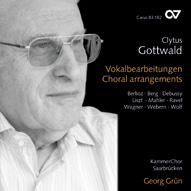
Carus 83.182 (also )
What a work! What a life! Never willing to compromise; selfcritical rather than ambitious; but always with the requisite self-confidence.
Where did this come from? Unlike his generation and that of my parents, we did not have to live through a collapse in civilization around 1945. Could it have been this rupture that made Clytus Gottwald incapable of compromise, convinced him of the “progress in musical material”, which sometimes made him scoff at neo-tonal compositions at the beginning of the 1980s and realize that his true place did not lie with the “creatives” but rather with their “facilitators”? This was the incisive analysis offered by Thomas Kabisch at the funeral service on January 23rd. And it echoes the sympathetic opinion of Manfred Schreier in the Festschrift for Gottwald’s 80th birthday (Carus 24.049) that he rigorously opposed the regurgitation of previous styles (“What for?”).
But are facilitators just some kind of subordinate “helpers”? Certainly, Clytus Gottwald will not be remembered in this way. Especially when his compositional material aims to transcend boundaries in ways previously thought impossible, it is inevitable that questions must be asked of those who produced it, “questions destined to be solved each time in an unexpected way,” as Pierre Boulez put it in the birthday Festschrift. We can never forget how Gottwald himself once talked with amusement about his function as the serving “choirmaster” in collaboration with Boulez, one of his best friends. Boulez and Ligeti departed this world before him, he wrote in the preface to one of his arrangements. Now he has caught up with them.
György Ligeti. Requiem
The Requiem is being issued for the first time together with Ligeti’s Lux aeterna which represents, with regard to its content, a “completion.” These two works are supplemented by transcriptions by Clytus Gottwald, the dedicatee of the Lux aeterna Soloists, Kammerchor Stuttgart, Danubia Orchestra Óbuda, Frieder Bernius
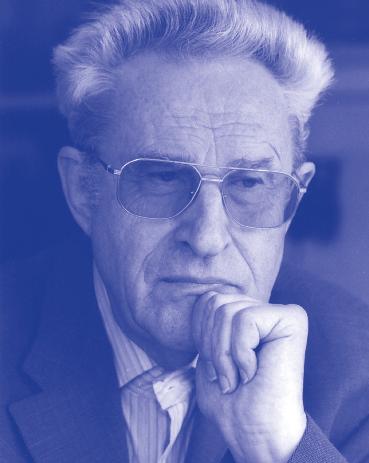
Carus 83.283
What experiences must Gottwald have made as an assistant to Marcel Couraud and his Paris ensemble in the 1950s, amidst the still-smoldering ruins of the “arch-enemy”? Doubtless, he will have first encountered the treatment of unaccompanied voices as an equal and effective counterpart to instrumental performance – as in Messiaen’s Cinq rechants, written for Couraud’s ensemble in the late 1940s. This must have formed the nucleus of his vision of expanding the human voice’s limitations beyond traditional notions of what is “singable” – a goal he shared with his “Schola Cantorum” from the 1960s together with the leading composers of that time such as Lachenmann, Boulez, Schnebel, Holliger, and Ligeti. What led him to later concentrate on arranging instrumental works and songs (with piano) for vocal ensembles? In an article published after the turn of the century in the annual program of the SWR Vokalensemble, he pleads for the continued development of choral music. In particular, he
Clytus Gottwald has passed away. A reminiscence by Frieder BerniusClytus Gottwald (1925 – 2023)
stresses that “the technological possibilities of the choir as an instrument were exhausted in the 1960s” and demands “a decisive step into the future”, one that would “transform the innovations of that time into something new.” Further: “One of the most important innovations was certainly that of diversification, i.e. the notion of no longer treating the choir as an undifferentiated mass, but rather engendering a sense of chamber music performance ... The collective choral sound will then be constituted from the liberated performance of each singer rather the suppression of the individual ...” Was this the Big Bang-moment for his arranging?
During this time, he must have become fascinated by György Ligeti’s microtonality. And since Ligeti’s Requiem, composed between 1963 and 1966, lacks the Communio (the Lux aeterna) which normally belongs to the Missa pro defunctis, Gottwald asked him to set this text for 16 voices a cappella. This inaugurated the beginning of a new wave of compositions written specifically for this size of ensemble. For Gottwald, the 16-voice setting was a necessary extension of Messiaen’s 12 voices, in the belief that it would enable him to blur the line between soloistic capabilities and choral accomplishment. Ligeti’s Requiem, in contrast to his Aventures of the same time, is limited compositionally to purely vocal expression (Peter Rummenhöller once called it “neo-Romantic”) with wholeand half-tone clusters. A constraint? On the one hand, yes; but on the other, this approach demanded an accuracy of intonation that previously could only be achieved instrumentally. So hats off to the first recording of this work by Schola, released by WERGO just a few years after the premiere.
This work, and thus the example of Gottwald and his Schola, have accompanied me throughout my life. I was personally acquainted with many of its members; in particular, I had close contact with the deepest bass of the Schola, my voice teacher, August Meßthaler, who taught me a vocal technique that I still draw on today. For me, Lux aeterna came like a bolt from the blue after my experience with Baroque music and training as a singer. I first tackled the score four years after its premiere, although I only truly mastered it when making my own recording in the late 1990s. For this work taught me how to achieve an a cappella performance (also of other compositions) that is in no way inferior to an instrumental interpretation. Let’s not forget that as late as the 1920s, Schoenberg believed it necessary to add a colla parte wind accompaniment to his a cappella Friede auf Erden (Peace on Earth), because for him it was simply unimaginable that singers could perform without “backing” instruments, just as peace was impossible without “the backing of arms”, as he wrote shortly after the end of the First World War. Any good performance requires a dynamic balancing of open and closed vowels (a “lux” will always sound quieter than an “aeterna”) as well as vocal balance achieved through good singing technique (so-called singing “in the mask”) in order to precisely realize the required half-tone intonation. How often did I fail in bars 5 and 6, or 42 and 43?
Gottwald himself once wrote in a booklet: “In 1978, while Boulez was rehearsing Ravel’s orchestral song Soupir, the possibility of a choral transcription occurred to me in a flash, which I soon was able to realize. This was easier for me
Gustav Mahler (1860 – 1911) / Clytus Gottwald (1925 – 2023)
Urlicht (ger)
Coro SSAATTBB / 5 min
Carus 9.133/20
Gustav Mahler (1860 – 1911) / Clytus Gottwald (1925 – 2023)
Im Abendrot. Adagietto from the 5th Symphony (ger)
Coro SSSSAAAATTTTBBBB / 9 min




Carus 9.134
Claude Debussy (1862 – 1918) / Clytus Gottwald (1925 – 2023)
Les Angélus (fr)
Coro SSSAAA / 2 min
Carus 9.503
because 13 years earlier, during a performance of Ligeti’s Lux aeterna, I had become acquainted with a completely new choral technique, namely that of composing in tonal planes.” The transcription of Ravel’s orchestral song for the 16 voices of the Schola, and shortly thereafter Mahler’s Ich bin der Welt abhanden gekommen, ushered in a new chapter in Gottwald’s work, followed by over 120 arrangements, which have greatly enriched the choral repertoire and were first published by Universal Edition in Vienna, and later by Carus. His brilliant command of polyphonic vocal writing, certainly approaching that of the above-mentioned “creatives”, allows every singer to achieve the “liberated performance” hoped for by Gottwald!
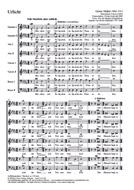
Frieder Bernius is in great demand worldwide as a conductor, seeking a sound which is both authentic and at the same time distinctive and personal – whether in the vocal works of Bach, Homilius, or Ligeti. He has conducted the complete recording of the sacred vocal music of Mendelssohn and many other recordings, and is also editor of music editions published by Carus.
www.carus-verlag.com/en/clytus-gottwald


50 years of Carus – 50 years of passion for choral music, which we share with you. In the Carus anniversary year, we asked prominent directors to present their personal highlight from five centuries of choral music for you. You can read these and all other texts in detail in our CARUS Blog – our inspiration portal for choirs and choral directors!
“... like a shining treasure trove of grandiose melodies, striking orchestral ideas and harmonic turns, which do not restrict the view of the text of the Mass, but expand it into new dimensions.”
Anne Kohler, Professor of Choral Conducting at the Hochschule für Musik Detmold and artistic director of the German Federal Youth Choir, on Franz Schubert’s Mass in A flat major D 678


Carus 40.659
“30 years ago, we, Bach Collegium Japan, have performed this work by Buxtehude as a pre-concert to Bach’s early cantatas in a small church in Tokyo, and also recorded it later. I was not sure at all if Japanese audiences would enjoy this kind of music, since it is utterly contemplative and has no buoyant mood. But it seemed that many people were impressed. Indeed, in spite of its modest and simple guise, this work has an enormous power to attract us.”

Carus 36.013
“The Mass in E minor by Anton Bruckner captivated my soul and intrigued my mind from the very first performance I heard many years ago, because it is intimate but equally dramatic, it is dense but at the same time accessible, it is imposing but also humble.”
María Guinand, Artistic Director of the Schola Cantorum Foundation of Venezuela and the Choir of the Polar Foundation, on Anton Bruckner’s Mass in E minor WAB 27
Carus 27.093
“Handel’s masterpiece always remains on my desk. I love this music, which is rich in effects but also emotional. For me, the improvisational element for the vocal soloists is of course an indispensable aspect. I enjoy working with them on this because I know that Handel’s singers were very experienced at improvising.”
Ton Koopman, harpsichordist, organist, conductor and Director of the Leipzig Bach Archive, on Handel’s Messiah (Carus 55.056)
“There are few works that can harness one’s attention so closely, inviting one not merely to listen and watch, but to be drawn in and engage with its ritualized drama, and to be immersed physically, mentally and emotionally in its unfolding.”
Sir John Eliot Gardiner, Artistic Director of his Monteverdi Choir, English Baroque Soloists and Orchestre Révolutionnaire et Romantique and pioneer of historically informed performance, on Monteverdi’s Vespers 1610 SV 206



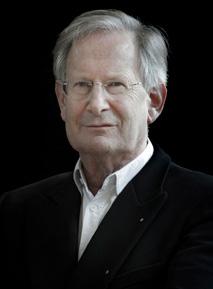
Carus 27.801
“Devotional grandeur in the “Kyrie”, concentrated energy and dramatic density in a compressed space in the “Gloria”, “Credo”, and “Agnus Dei”, heavenly breadths in the “Sanctus and Benedictus” – in his interpretation of the text, Beethoven juxtaposes extreme musical differences. And yet the work remains completely self-contained.”
Jan Schumacher, University Music Director and Professor at the Goethe University in Frankfurt/Main, on Ludwig van Beethoven’s Missa solemnis
Carus 40.689
“This music is particularly suitable for an intensive exploration of the psalm texts as well. In the manner in which the music adds that which is multi-layered, ambiguous, lucid and also inexpressible, an intelligibility arises that can only be achieved in the interplay between word and music.”
Hans-Christoph Rademann, Artistic Director of the Internationale Bachakademie Stuttgart and Conductor of the Gaechinger Cantorey, on Heinrich Schütz’s Psalmen Davids
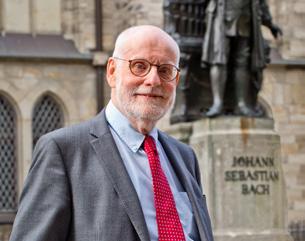
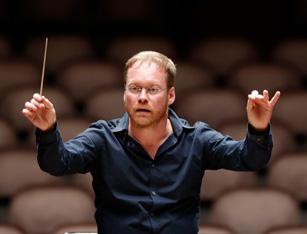

Carus 83.255
More on the CARUS Blog at https://blog.carus-verlag.com/en


1“Misatango” is one of your most popular pieces. How did you come up with the unusual combination of tango and Latin mass?
At the beginning of my career in Buenos Aires, I worked as a choral conductor and, at the same time, as a pianist and director of a tango orchestra. Many singers from my choir loved the tango and came often to see our concerts with the tango orchestra. So it was natural to start thinking of a project we could do together. After some experiments with no good results from traditional tangos, I decided, rather than arrangements, it would be better to compose original music for choir and tango orchestra. And that was the beginning of Misa a Buenos Aires
When Carus-Verlag commissioned you to write a new composition for the 50th anniversary of the publishing house, how did you approach its composition?
Is it necessary for the performers of your works to have a basic knowledge of tango music?
If the musicians have experience in tango, then so much the better, especially the pianist, contrabass and bandoneon. There are many skills when playing these instruments that make a big difference during performance.
The first point was to choose the text. It is a difficult point because it should be a text with contrast between expressive parts and parts with a strong character, and it should generate 20 minutes of music. Then the process as usual: working on the analysis of the text, looking for the best themes for each sentence, and – the most difficult – finding the balance and good proportions for the complete work!
The vesper psalm “Nisi Dominus” offers wisdom on finding happiness in life, teaching that happiness cannot simply be “made” by oneself. It’s about the lives of ordinary people: their homes, families and finding peace. What attracted you to setting this particular text to music?
The tango, as popular music was created by lots of generations working together and, at its beginning, mostly by regular working people. It is music to share between friends. And we should remember the dance, which is in couples but also always in group.
Impressions from the world premiere of Nisi Dominus at the music festival ION 2022 with the Vokalensemble St. Lorenz and the Ensemble Kontraste under Matthias Ank
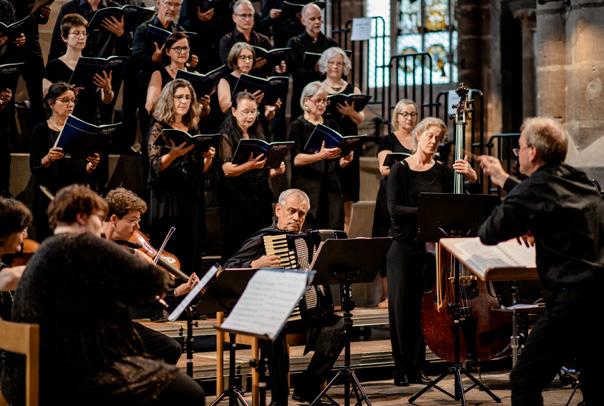
Some people also call the psalm the “student psalm” because it states it’s not worth getting up early. Are you an early riser?
Well, many years ago as a “bohemian composer”, I loved to work late at night, but today I enjoy the morning more as a chance to exercise and run along the river.
6
When and where do you prefer to compose?
At home in my studio, but I have to say that my best ideas were born all over the place during my travels: at hotels, houses of friends or just on the streets…
7
What has been your most emotional musical experience so far?
Maybe when my pieces are sung in not 100% Catholic countries like Morocco, Egypt, Israel, Turkey, China, India, etc. And I am very proud that my music has been accepted in countries with different credos.
8
Could you tell us about your next compositional project?

I finished an opera in Italian, with text by Francesco Querubini, which will be premiered next July in Italy. I am also working on a Requiem, a commission from editorial Eurindia, and a piece called Suite Rio de la Plata, based on a text by Alfonsina Storni, which is another commission from il Coro Calliope di Ticino Switzerland.
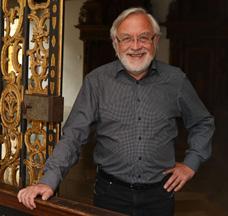
Klaus Brecht is a passionate choral director, voice coach, and adjudicator. He has been working with Carus for many years. As the editor of our very successful chorissimo! series for singing at school, he has applied his vast knowledge to help train the singers of tomorrow. For adult choirs, he has produced, among other things, the Carus choral collection Weihnachtslieder (Christmas Carols). We asked him to select some highlights from our exciting “Crossover” program. Read on to make some great discoveries!
9
You travel a lot across the world. Where do you feel most at home? And why?
Well, I couldn’t say one place or country. Maybe the best place is always where you have friends.
10
Everybody is allowed to dream … What do you recommend to a culture lover who visits your native city Buenos Aires? What should they definitely experience there?
The new auditorium CCK, San Temo, and try to find an orchestra in a less touristy place. It’s difficult to say where because they change the auditoriums all the time.
11
If you didn’t compose or make music, then …
… I would be watching movies and traveling with my family to Patagonia in Argentina. We have a farm in the Andes Mountains.
Martín Palmeri (*1965): Nisi Dominus. Psalm 127 Scoring: Solo S, Coro SATB, Bandoneon (Accordion), Pfte, 2 Vl, Va, Vc, Cb / lat 18 min / Difficulty level: 3 complete orchestral parts on loan Carus 27.406
With this composition, Martín Palmeri joins the ranks of famous predecessors such as Monteverdi, Schütz, Handel, and others who, in a style appropriate to their age, have set this pilgrimage psalm to music – “für das Lebensglück als eine Gabe Gottes” (“for joy as a divine gift of God”). Palmeri’s new work captivates with its tonal contrasts and brilliant scoring. The first movement features melodic, quietly lyrical passages alternating with those of great sonic power. Particularly stirring are the deep hammer blows on the piano. After an intimate second movement, the third begins with a virtuosic fugal theme running through all the voices, before we suddenly leap into South American rhythms and the piece draws to a scintillating close.
Clearly the composer has taken great care to ensure that all voices enjoy equal weight and are given melodies to sing, while the vocal ranges are comfortable for choir singers. Palmeri is certainly worth discovering!
Bobbi Fischer (*1965): Missa latina
Scoring: Solo S, Coro SATB (with voice divisions and choir soloists), Vl, Bandoneon (Accordion), Pfte, Cb, Drums, Perc / lat / 35 min
Difficulty level: 4 complete orchestral parts on loan
Carus 28.007
Bobbi Fischer’s composition is a crossover piece in two ways: on the one hand, it opens with an homage to Bach’s Mass in B minor, namely with three Kyries as supplication and a fugato by the choir, before we quickly transition into the sounds and rhythms of the modern world. On the other hand, it is also a “go across” in the sense of crossing the Atlantic – a leap from the Old to the New World. The idea of combining traditional forms of European music with the musical idioms of South America runs through the whole work. In the New World we encounter elements of Argentine tango, Caribbean rhythms, Latin jazz, and bolero. The Benedictus is movingly and ravishingly composed as a chamber piece for solo soprano, violin, and bandoneon. And the Dona nobis pacem is sure to give you goosebumps!
Wolfram Buchenberg (*1962): Missa ad majorem Dei gloriam
Scoring: Solo Bar, Coro SATB (divisi), Big Band (S-/A-Sax, A-Sax, 2 T-Sax, Bar-Sax, BClt, 5 Tr, 4 Trb, Pfte, Git, Cb, Perc, [2 Fl, 2 Clt]) / lat
32 min / Difficulty level: 4 complete orchestral parts on loan
Carus 28.010
For me, Buchenberg is one of the most accomplished choral composers of our time. The Mass (without Credo) is unique in his extensive œuvre. Commissioned by the Landesakademie Ochsenhausen for the C.H.O.I.R. festival, it was completed in 2013. The opening of the Kyrie recalls the mood of the choral text “Aus der Tiefe, Herr, rufe ich zur dir” (From the deep, Lord, cried I, Lord to thee). An insistent, pulsating drone rises from the depths to explode in the plea “Herr, erbarme dich” (Lord, have mercy). Filled with the spirit of Christmas, the Gloria describes the appearance of the angel to the shepherds. The choir imitates the pealing of a bell while the big band provides a jazzy dance-like accompaniment. The Sanctus is another great example of Latin flair. Buchenberg makes brilliant use of various stylistic devices in the four movements of the Mass, including classical passages, symphonic wind music, touches of minimalism, parts that really swing, and much more. All of this is applied very deliberately to illuminate the text. The vocal parts, choir, saxophones, trumpets, trombones, guitar, piano, and percussion are all given equal weight. In this mass, Buchenberg shows himself to be a master not just of scoring but also of balance, repetition, transformation, and surprise. A challenging work that leaves you wanting more.
Christoph Schönherr (*1952): Magnificat

Scoring: Solo, Coro SATB, 2 Tr/Flugelhorn, Sax/Fl, 2 Vl, Va, Vc, Pfte (Keyboard), E-Bass (Cb), Perc / lat / 40 min

Difficulty level: 3
complete orchestral parts on loan
Carus 27.208
Christoph Schönherr composed his Magnificat in 2005. The setting for jazz singer, choir, flute, trumpets, saxophone, flugelhorn, piano, and drums/percussion is both compact and rich. A wide range of styles such as swing, samba, pop, and jazz as well as funky sections give the lyrics a contemporary depth and vibrancy. It’s fascinating to observe the musical communication between soloist and choir. We hear – or better experience – a modern, strong Mary who cries, fights, and rejoices. She is very much a woman of our time, and (consequently) her part is in English. The choir sings the traditional Latin text (really a “dead” language?), which in the central emotional parts – Fecit potentiam, Deposuit potentes, or Dispersit superbos – offers some very lively opinions, also regarding our experiences in today’s world. The piece ends on a positive note with a rousing, danced “Amen” as the final chorus.
The Magnificat has been performed all around the world and I warmly invite all school and amateur choirs to give it a go! You can make a great concert program by combining this work with Schönherr’s Missa in tempore incerto (Carus 27.076).
Oliver Gies (*1973) based on Mendelssohn Bartholdy: O Täler weit
Scoring: Coro SATB / dt / 3 min
Difficulty level: 4
Carus 9.803
A crossover par excellence: some original music by Felix Mendelssohn suddenly transitions into a pop version arranged by Oliver Gies. This is a great etude for jazz choirs aiming to conquer the world of classical music. It also presents a nice challenge for classically-oriented choirs to get a feel for contemporary rhythms and sounds and – in the best case –to experience and enjoy the coolness of a real groove. In his informative preface to the Carus edition, Oliver Gies urges us to “have fun”. I can’t disagree with that!
GABRIEL FAURÉ
100th anniversary of death 2024
1845 – 1924
Requiem op. 48
Soli SBar, Coro SATB, 2 Fl, 2 Clt,
2 Fg, 4 Cor, 2 Tr, 3 Trb, Timp, Vl, 2 Va, 2 Vc, Cb, Arpa, Org
40 min / ed. Marc Rigaudière
Carus 27.312
Arrangement for soli, choir & organ
Soli SBar, Coro SATB, Org
40 min / arr. Yves Castagnet Carus 27.312/45
Reconstruction of the version with small orchestra of 1889
Soli SBar, Coro SATB, 2 Cor, 2 Tr, 3 Trb, Timp, Vl solo, 2 Va, 2 Vc, Cb, Org, Arpa / 35 min ed. Marc Rigaudière
Carus 27.311
www.carus-verlag.com/en/composers/faure
Many choirs are extremely busy in the final days before a concert. Carus can support you with our digital service package, which includes reliable texts (introductory texts and singing texts) to help you create your program booklet. Provided in the original language and in translation, all texts meet our exacting Carus standards. To mark the 2024 anniversary, we are also including image templates to help you design advertising materials such as posters or program booklets.
Download now for the anniversary price of only 4.90 €.
In 2024 we will remember the composers Gabriel Fauré and Giacomo Puccini, both of whom died a century ago. Carus is offering complete sets of both composers’ sacred vocal works in modern Urtext editions, including vocal scores as well as all choir and orchestral parts. For the two major works, Puccini’s Messa a 4 voci con orchestra (“Messa di Gloria”) and Fauré’s Requiem, there are also practice aids for choral singers, vocal scores XL in reader-friendly large print, and additional digital material. We are also offering special arrangements of the works for smaller ensembles to enable more choirs to celebrate these two composers in their commemorative year.
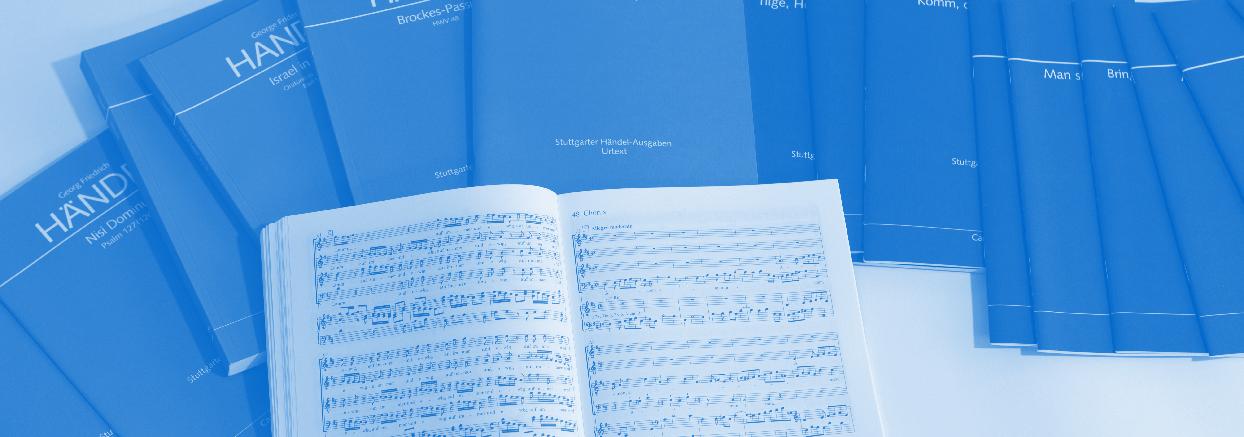
Messa a 4 voci con orchestra “Messa di Gloria” SC 6 (lat)
Soli TBar, Coro SATB, Pic, 2 Fl, 2 Ob, 2 Clt, 2 Fg, 2 Cor, 2 Tr, 3 Trb, Oficleide, Timpani, 2 Vl, Va, Vc, Cb, [2 Cor, Arpa] / 44 min ed. Dieter Schickling based on the Urtext of the “Edizione Nazionale delle Opere di Giacomo Puccini”
Carus 56.001/01
Arrangement for chamber orchestra
Soli TBar, Coro SATB, Fl, Ob, Clt, Cor, Fg, Timp, 2 Vl, Va, Vc, Cb 44 min / arr. Joachim Linckelmann
Carus 56.001/50
www.carus-verlag.com/en/composers/puccini
orchestra
Missa solemnis
WAB 29 / 31 min
S: b flat– b flat2 | A: g– e flat2 (f sharp2)
T: B flat–a1 | B: F – e flat1
Magnificat
WAB 24 / 5 min
S: d – a flat2 | A: a– d2 (f2)

T: d–f1 | B: F – c1
winds
Sacred choral music. Choral collection
organ / piano

large orchestra a cappella
Christus factus est WAB 9
Secular choral music. Choral collection
16 SATB settings several with keyboard accompaniment various levels of difficulty
Locus iste WAB 23
Kronstorfer Messe WAB 146
Du bist wie eine Blume WAB 64
easy to sing
Our infographic gives you a useful overview of Bruckner’s choral works. The position of the individual pieces (selection) reflects both the degree of difficulty for choirs as well as the complexity of the instrumental ensemble required for performance. Turn to page 23 to find more about the two new choral collections with sacred and secular choral music.
www.carus-verlag.com/en/composers/bruckner
WAB 38 / 9 min
Mass in D minor
WAB 26 / 45 min
S: b – a2 | A: a – e2
T: A– a1 | B: F – e1
WAB 39 / 38 min
S: b flat– a2 | A: a– d2
T: d–g1 | B: F – d1
S: b– c3 | A: g– e2 (f2)
T: c–b1 | B: E – e1
WAB 45 / 25 min
S: c – c3 | A: g– f2 (f sharp2)
T: c –b1 | B: D – e flat1
Practice aid
Mass in F minor
WAB 28 / 60 min
S: a flat– b flat² | A: a flat– f2
T: A flat –a1 | B: F – e1
Practice aid
Te Deum
WAB 45 / 25 min
Arr. for brass quintet and organ
S: c – c3 | A: g– f2 (f sharp2)
T: c –b1 | B: D – e flat1
Psalm 150
WAB 38 / 9 min
Arr. for choir & organ
S: b – c3 | A: g– e2 (f2)

T: c–b1 | B: E – e1
Mass in E minor
WAB 27 / 37 min
S: b– a2 | A: g– e2 (f2)
T: B– a1 | B: E – f1
Practice aid
Practice aid Practice aid
Mass in E minor
WAB 27 / 37 min
Arr. for Choir & Organ
S: b – a2 | A: g– e2 (f2)

T: B– a1 | B: E – f
Um Mitternacht (arr. Blume, based on WAB 89)
Christus factus est WAB 11
Virga Jesse WAB 52
Mein Herz und deine Stimme (arr. Høybye, based on WAB 79)
Der Herbst des Einsamen (arr. Breuer, based on the Adagio of WAB 112,3)
C Anton Bruckner (1824 – 1896)
Mass in F minor WAB 28 (lat)
Soli SATB, Coro SSAATTBB, 2 Fl, 2 Ob, 2 Clt, 2 Fg, 2 Tr, 2 Cor, 3 Trb, Timp, 2 Vl, Va, Vc, Cb / 60 min / ed. Felix Loy
Bruckner’s mighty Mass in F minor is one of his most significant creations and one of the great 19th-century choral works. The composer uniquely succeeds in exploring faith through the lens of music. In doing so, he ventures into extreme forms of expression, which caused some disgruntlement among the musicians at rehearsals for the premiere in November 1868. In subsequent years, however, the work has gradually become more accepted, and today presents a highly appealing challenge to advanced choirs.
The Carus edition presents the Mass in F minor as the final 1893 version based on the autograph and the surviving copies from the copyist. As an Urtext edition it follows the latest scholarly standards ready for the Bruckner anniversary year in 2024!
Carus 27.094, full score 99,00 € ( 89,10 €), vocal score 24,95 €, vocal score XL, choral score ± 11,95 €, complete orchestral parts practice aid in preparation
Anton Bruckner (1824 – 1896)
Magnificat WAB 24 (lat)
Soli SATB, Coro SATB, 2 Tr, Timp, 2 Vl, Vc, Cb, Org / 5 min ed. Julia Rosemeyer
What does early Bruckner sound like? The Magnificat in B flat major casts a completely unexpected light on the young composer on the threshold of composing his great church works. Around five minutes in length, and in the spirit of Mozart, it was written in 1852 for a service at the Monastery Church of St. Florian. With its concise form and scoring for small forces it offers many opportunities for use. Trumpets and timpani give a festive emphasis to this song of praise to Mary.
Carus 27.207, full score 21,95 € ( 19,80 €), vocal score 7,95 €, choral score ± 4,50 €, complete orchestral parts 44,00 €
Anton Bruckner (1824 – 1896)
Missa solemnis WAB 29 (lat)
Soli SATB, Coro SATB, 2 Ob, 2 Fg, [2 Cor], 2 Tr, 3 Trb, Timp, 2 Vl, Va, Vc, Cb, Org / 31 min / ed. Uwe Wolf
Anyone who is familiar with Bruckner’s symphonies and great masses will probably be astonished upon hearing his Missa solemnis of 1854: can the tradition of the Viennese classics still be so clearly evident in a work by Bruckner? And yet, isn’t it also possible to hear much of Bruckner’s later style?
With this edition, the earliest of Bruckner’s orchestral masses is now available as an Urtext edition, which reflects the latest scholarly research. Compared with Bruckner’s late masses, the demands on chorus and soloists are considerably less. The horns play in just two movements and can be replaced by trombones. This rarely performed work offers many choirs an exciting alternative to the better-known masses – not only for the Bruckner anniversary in 2024!
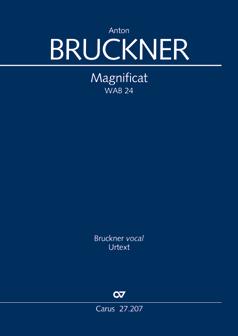
Bruckner 2024 200th birthday 1824 – 1896
Carus 27.901, full score 79,00 € ( 71,10 €), vocal score 21,95 €, choral score ± 11,95 €, complete orchestral parts 163,00 €
Anton Bruckner (1824 – 1896)
Bruckner. Sacred choral music

Choral collection (ger/lat)
Coro SATB, partly with Org, Pfte or Trb ed. Martin Dücker and Matthias Kreuels
Great art in small forms – Bruckner’s smaller sacred works reveal a more personal side to the master symphonist and creator of large-scale orchestral masses. Throughout his life, Bruckner’s deep faith and dedication to the Catholic liturgy inspired him to write church music in smaller forms suitable for performance at Sunday services or in sacred concerts.
In addition to the well-known motets, the choral collection includes smaller sacred works such as short mass settings (a cappella or with organ) and simple liturgical songs and hymns, some with organ or occasionally with trombones. In addition, the volume presents two somewhat longer works from Bruckner’s youth: a Magnificat and a setting of Psalm 23, both with piano accompaniment.
Carus 4.027, editionCHORLEITUNG (conductor’s score) 24,00 € (introductory price valid until June 30, 2023, after that 28,00 €), editionCHOR (choral edition) ± 12,00 € from 20 copies (introductory price valid until June 30, 2023, after that 15,00 €)
separate editions available in print and digitally
Anton Bruckner (1824 – 1896) Bruckner. Secular choral music Choral collection (ger) Coro SATB, partly with Pfte ed. Simon Halsey, Jan Schumacher
At times Romantic, at other times with a jazzy touch, this Choral collection is full of exciting discoveries and new arrangements at various levels of difficulty.
Bruckner left only a few movements for mixed choir; instead, his music for male voices constitutes a far larger body of work. For this collection, renowned arrangers from Germany, England, Denmark, and Italy have specially reworked the most beautiful of these choral movements for SATB, enabling this great repertoire to be performed by mixed choirs. Two original SATB compositions are also included. Furthermore, the choral collection features arrangements of songs originally written for solo voice and piano with texts by such poets as Heinrich Heine and Emanuel Geibel. Another highlight is an arrangement of the Adagio from Bruckner’s String Quintet WAB 112, which Heribert Breuer has created for choir to a text by Georg Trakl.
Carus 4.026, editionCHORLEITUNG (conductor’s score) 22,00 € (introductory price valid until October 30, 2023, after that 27,00 €), editionCHOR (choral edition) ± 12,00 € from 20 copies (introductory price valid until October 30, 2023, after that 15,00 €) separate editions available in print and digitally
Johannes Brahms (1833 – 1897) Song of the Fates op. 89 (ger/en) Coro SAATBB, 2 Fl (Pic), 2 Ob, 2 Clt, 2 Fg, Cfg, 4 Cor, 2 Tr, 3 Trb, Tb, Timp, 2 Vl, Va, Vc, Cb / 12 min ed. Rainer Boss

The Three Fates, or Parcae, were the goddesses of fate in Greek-Roman mythology, and sang on themes of curse and fate. The "Parzenlied" in Goethe’s verse drama “Iphigenie auf Tauris” is concerned with these themes and became the model for Johannes Brahms’s setting. His Gesang der Parzen (Song of the Fates) op. 89 describes in thrilling, eruptive sounds the fight to overcome the mythical curse through the purity of truthful, noble actions and the power of hope.
With a duration of around 12 minutes, the work can be combined with Brahms’ German Requiem in concert.
Carus 10.400, full score 21,95 € ( 19,80 €), vocal score 12,95 €, choral score ± 6,95 €, complete orchestral parts 145,00 €

Reger 2023
150th birthday
1873
1916
Max Reger (1873 – 1916)
Psalm 100 op. 106 (ger)
Coro SATB (divisi), Pfte / 30 min ed. Christopher Grafschmidt, Claudia Seidl
Max Reger’s setting of Psalm 100 is one of the “grand style” choral-symphonic works of the classical modern repertoire. Contrapuntal skill in the tradition of Bach combines with overwhelmingly powerful expressiveness, rich in contrasts. The full harmonic and stylistic breadth of the early 20th century sings out, not only in frenetic song, but also in the search for awareness in quieter passages.
Carus 52.939/03, vocal score 24,95 €, choral score ± 11,50 €
Reger-Werkausgabe, Vol. II/11: Choral works with piano accompaniment ed. Christopher Grafschmidt, Claudia Seidl
Volume 11 contains the Drei Chöre op. 6 (1892), Reger’s only original composition for a mixed vocal scoring and piano in which he used his two-color method of notation for the first time (musical text in black, performance instructions in red). In addition, the volume contains the piano reductions of some of the choral-symphonic works which Reger composed between 1903 and 1914 –the Gesang der Verklärten op. 71, Psalm 100 op. 106, Nonnen op. 112, Einsiedler op. 144a and the Requiem op. 144b, and the Weihegesang WoO V/6
Carus 52.818, hybrid edition 235,00 €
Giacomo Carissimi (1605 – 1674)
Historia di Jephte (lat)
Soli SSSATB, Bc (Soli e Coro SSSATB, Bc) 23 min / ed. Wolfgang Hochstein
The harrowing Old Testament story of the army commander Jephthah, bound by a sacred vow to kill his daughter, inspired the Roman composer Giacomo Carissimi to create this intense and moving setting. Written in the 1640s, Historia di Jephte is not only one of the earliest oratorios, but also one of its greatest.
Scored for just six solo voices in diverse combinations accompanied by basso continuo, Carissimi presents the Latin biblical text in the recitative style of the early Baroque. He nonetheless repeatedly abandons this style to highlight the plot’s tragic events, employing all expressive Affekts he had available to him. The chromatic voice-leading and thrilling harmonization of the lamentations, and Jephthah’s dialogue with his doomed daughter create an intense and anguished atmosphere.
While scholars believe that the choir originally consisted of six solo parts, the work does not suffer when performed by a larger ensemble. To commemorate the 350th anniversary of the composer’s death, Carus is publishing this new critical edition based on the copy made by Carissimi’s pupil, Marc-Antoine Charpentier. A continuo realization is included in the score.
Carus 10.043, full score 29,00 € ( 26,10 €), choral score ± 6,50 €, basso continuo, organ
Georges Bizet (1838 – 1875)
Te Deum (lat)
Soli ST, Coro SATB (div.), 2 Fl, 2 Ob, 2 Clt, 2 Fg, 4 Cor, 2 Tr, 3 Trb, Oficleide (Tb), Timp, Arpa, 2 Vl, Va, Vc, Cb 20 min / ed. Marc Rigaudière
As an acclaimed opera composer, Georges Bizet admitted that he had no real sensibility for sacred music. His Te Deum is nonetheless a truly fascinating and highly expressive work. From the majestic “Te Deum laudamus”, to the skillful choral fugue of “Fiat misericordia tua”, and the opening’s powerful recapitulation, the composition shows no trace of the difficulties that beset the young Bizet by his own admission before he finally completed the work in 1858.
In the extensive trilingual preface to this Urtext edition, editor Marc Rigaudière illuminates the circumstances surrounding the composition of the Te Deum, a work which occupies a singular position in Bizet’s œuvre. The edition is based on the composer’s autograph score — the work’s only surviving source. For the first time, this work is available with all performance parts.
Carus 27.187, full score 38,00 € ( 34,20 €), vocal score 18,95 €, choral score ± 9,95 €, complete orchestral parts
Marc-Antoine Charpentier (1643 – 1704)
Te Deum H 146 (ger/en)
Arrangement for soli, choir and organ
Soli e Coro SST(A)TB, Org
25 min / arr. Andreas Gräsle
Marc-Antoine Charpentier’s impressive setting of the Latin canticle Te Deum opens with a striking introductory fanfare. It is familiar to millions, since it is the theme tune of the Eurovision TV broadcasts. Andreas Gräsle has transferred the orchestral setting of this French Baroque masterpiece to the organ with great sensitivity for the changing instrumentations and timbres in the original score. This edition enables the work to be performed for the first time in an alternative version for solo voices, choir, and organ.
The vocal scores and choral scores of the original version (Carus 21.032) can be used in combination with this organ setting.
Carus 21.032/45, full score 30,00 €, vocal score 17,50 €, choral score ± 9,50 €
Gabriel Fauré (1845 – 1924)
Requiem op. 48 (lat)
Arrangement for soli, choir and organ
Soli SBar, Coro SATB, Org 40 min / arr. Yves Castagnet
Faure’s Requiem, op. 48, is his only largescale sacred composition and certainly his most important essay in the genre. Already popular with audiences during his lifetime, its success continues to this day. For this new edition, Yves Castagnet, titular organist of the choir organ at Notre Dame in Paris and deeply rooted in the French tradition of organ-playing, has transposed the orchestral setting to his instrument. In doing so, he has retained the transparent structure and rich color of the orchestral score – not least thanks to varied and stimulating suggestions for registration. This wonderful Requiem setting is now available in a modern version for choir and organ, just in time for the Fauré commemorative year in 2024!
The vocal scores and choral scores of the original symphonic version (Carus 27.312) can be used together with this organ setting.
Carus 27.312/45, full score 39,00 €, vocal score 12,50 €, vocal score XL 18,50 €, choral score ± 5,80 €, practice aid available (orchestral version)
Felix Mendelssohn Bartholdy (1809 – 1847)
Hymn of Praise. Symphony cantata
MWV A 18 (ger/en)
Arrangement for chamber orchestra
Soli SST, Coro SSAATB, Fl, Ob, Clt, Fg, Cor, Tr, Trb, Timp, 2 Vl, Va, Vc, Cb, [Org] 62 min / arr. Joachim Linckelmann
Mendelssohn described his 1840 work Lobgesang as “a symphony for chorus and orchestra”. It is now firmly established in the standard repertoire of the major oratorio choirs. For many choirs, Lobgesang remains on their wishlist of works they want to sing. But what can be done if the choir is too small, the budget is limited, and the performance space is tight?

Here, the experienced arranger and orchestral musician Joachim Linckelmann offers an excellent tried-and-tested solution. In his arrangement for soloists, chorus, and chamber orchestra, he has reduced the wind instruments from the original 17 to just 7 single instruments. The string parts remain largely identical to the original, but can also be played by smaller numbers. And the vocal parts (soloists and choir) are unaltered, so they can be sung from the vocal and choral scores of the Carus Urtext edition.
Carus 40.076/50, full score 95,00 € ( 85,50 €), vocal score 14,95 €, vocal score XL 19,95 €, choral score ± 7,00 €, complete orchestral parts on loan, also available digitally, practice aid available
Hope. Easter music (en)
Solo Bar (T,B), Coro SATB with voice divisions, ASax, Piano, Bass, Percussion 30 min
Danish composer John Høybye enjoys great acclaim at home and abroad, not just for his music but also for his work as a (choral) conductor and arranger. Presenting a medium level of difficulty, Hope. Easter Music is suitable for a good amateur choir. The mix of a beautiful choral sound and rhythmic intensity in jazz-inspired phrases is “trademark Høybye”. Primarily written for four voices (SATB), the choral writing subdivides at certain particularly expressive passages to create six- or eight-part harmonies. In addition, the male voices are challenged by several excellently scored four-part passages (TTBB without female voices). The short male-voice solo can be sung instead by the choir if necessary.
The instrumental quartet is given ample scope for improvisation. While each of the eight movements has its own unique character, the work forms a cohesive whole. Based on a text by Edward Broadbridge, the movements are linked by the theme of “hope” as well as by recurring musical motifs and themes. This not only makes the piece easier to rehearse, but also ensures its popularity with audiences.
Carus 10.114, full score 45,00 €, vocal score 21,00 €, complete orchestral parts 31,00 €
Johann Adolf Hasse (1833 – 1897)
Requiem in C major (lat)
Soli SAATB, Coro SATB, 2 Fl, 2 Ob, 2 Fg, 2 Cor, 2 Tr, Timp, 2 Vl, Va, Bc / 48 min ed. Wolfgang Hochstein
Johann Adolf Hasse composed this Requiem for the ceremonial exequies of the deceased Elector Frederic August II. Passionate choral movements, echoes of historic compositional styles, expressive vocal solos, and arias undeniably revealing Hasse the opera composer, plus trumpets and timpani in the orchestra –all these are the ingredients of a “royal” Requiem Mass in the style of a Missa solemnis.
Carus 50.751, full score 59,00 € ( 53,10 €), vocal score 17,95 €, complete orchestral parts 174,00 €
Requiem in B flat major (lat)
Soli SAATTB, Coro SATB, 2 Fl, 2 Ob, 2 Cor, 2 Vl, Va, Bc / 20 min ed. Wolfgang Hochstein
Hasse’s Requiem in B flat major, which we are publishing for the first time, was presumably composed as early as the second half of the 1750s. Nothing is known about the occasion for which this beautiful work was composed, or even whether it was performed during the composer’s lifetime.
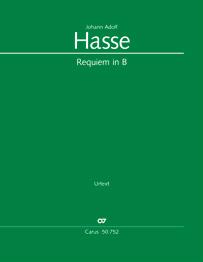
Henri DUPARC L’ invitation au voyage chœur (SSATB) et piano Bearbeitung von / Arrangement pa / Arrangement by Denis Rouger Carus 9.282 C
L’invitation au voyage (fr)
Coro SSATB, Pfte / 5 min
arr. Denis Rouger
Carus 9.282, full score ± 5,50 € ( ± 5,00 €)
Gabriel Fauré (1845 – 1924)
Mai op. 1,2 (fr)
Coro SMsA, Pfte / 3 min
arr. Denis Rouger
Carus 9.526, full score ± 3,95 € ( ± 3,60 €)
Gabriel Fauré (1845 – 1924)
Rêve d’amour op. 5,2 (fr)
Coro SSA, Pfte / 3 min
arr. Denis Rouger
Carus 9.527, full score ± 3,95 € ( ± 3,60 €)
GABRIEL
FAURÉ
Gabriel Fauré (1845 – 1924)
Pavane op. 50 (fr)
Coro SATB, 2 Fl, 2 Ob, 2 Clt, 2 Fg, 2 Cor, 2 Vl, Va, Vc, Cb (alternativ: Bearbeitung für Chor mit Klavier zu vier Händen) / 5 min / ed. Denis Rouger
Gabriel Fauré’s Pavane is one of his most popular compositions. What is less known, however, is that the premiere of this stylized dance in April 1888 was actually performed in this present version for mixed choir rather than the now more familiar orchestral and instrumental arrangements.
Based on Fauré’s autograph score, this new Carus edition reflects the original (faster) tempo marking. In addition to the composer’s revised piano reduction, Carus is also publishing a modern version for choir and four hands (Carus 10.402/10), wich will be published in August 2023.
Carus 10.402, full score 24,00 € ( 21,60 €), vocal score 4,95 €, choral score ± 3,50 €, complete orchestral parts
DONIZETTI Messa
Requiem
IMPRINT
Editior: Carus-Verlag GmbH & Co KG
Sielminger Str. 51, 70771 Leinfelden-Echterdingen
Tel: +49 (0)711 797 330-0

info@carus-verlag.com / www.carus-verlag.com
Carus 99.002/63, 3.2023
Prices are subject to change. Errors excepted.
6.2023 Urtext
5.2023
Soli SATBB, Coro SATB, 2 Fl, 2 Ob, 2 Clt, 2 Fg, 4 Cor, 2 Tr, 3 Trb, Timp, 2 Vl, Va, Vc, Cb, Org / 65 min ed. Guido Johannes Joerg
Through works such as Verdi’s Requiem or Puccini’s Messa di Gloria, we know that the great composers of Italian bel canto opera also wrote marvelous sacred music. Yet most of these pieces are rarely performed. This is also true of Gaetano Donizetti’s Messa di Requiem, which he composed as an expression of grief at the early death of Vincenzo Bellini in 1835.
Neither performed nor printed during Donizetti’s lifetime, the Requiem is ripe for rediscovery. A rich and highly intense work, it features dramatic choruses with full orchestra, fugues, and a cappella passages that alternate with lengthy cantilenas for the soloists.
Carus 27.322, full score 109,00 € ( 98,10 €), vocal score 29,95 €, choral score ±19,95 €, complete orchestral parts on loan
Charles Gounod (1818 – 1893)
Les sept paroles du Christ sur la croix (lat)
Soli SATB, Coro SATB/SATB, [Pfte o Org] / 15 min / Hazel Rowland
Spoken during his final hours, the “Seven Last Words” have been taken as a profound insight into Jesus’s final suffering on the cross. These words, or rather statements, have been set by numerous composers in different languages. Charles Gounod’s setting returns to the Latin text and explicitly recalls the music of Palestrina, but with an added nineteenth-century harmonic twist. The edition of this a capella work comes with a piano reduction for rehearsal purposes.
You can also read the magazine online: www.carus-verlag.com/en/spotlight/carus-magazine Follow
Editorial staff: Miriam Wolf, Marion Beyer, Iris Pfeiffer
Translation: Derek Henderson, Dr. Hazel Rowland
Layout + Cover: Nadine Kristen
± Minimum order quantity 20 copies from 40 copies 10%, from 60 copies 20% discount
Photos: Mathias Marx (4), Dr. Joachim Schlosser (4), Andrea Will (5), Carus (3, 5), Christoph Wolff privat (9), Guido Johannes Joerg privat (11), Hugo Jehle/SWR (12), Jens Meisert (13), Wolfgang Kessler (AK/12), Marco Borggreve (MS/12), Mauricio Lopez (MG/12), Sim Canetty-Clarke (JEG/13), Aldo Allessie (TK/13), Martin Förster (HCR/13), Uwe Dettmar (JS/13), Kathi Meier/Spiegelhof Fotografie (20), Landesakademie Ochsenhausen (17)
As the leading publisher of vocal and choral music, Carus has built up a unique catalog of sheet music over the past 50 years. Behind the scenes, our almost 50-strong team from a wide variety of fields are constantly working to expand, market, and deliver our products to our customers’ complete satisfaction.
All of our scores and other products are available through our webshop. You can easily and quickly search our entire catalog using filters (e.g. scoring, duration, level of difficulty, musical occasion). Sample scores, audio tracks, and videos will help you choose the right piece. Our CARUS Blog offers additional inspiration for and from choir directors. And our musically-trained customer service team are always on hand to assist with your individual inquiries or orders.
Thanks to our in-house printing service, we are able to supply any title you want – no matter how obscure. In addition, we can offer separate editions, for example from a choral collection, quickly and inexpensively.
Orders received by 11 a.m. (GMT+1) will be handed over to the shipping agent the same day. Depending on the delivery address and the selected shipping method, your sheet music should
arrive over the next few days through your letterbox or at your local music store.
Our retail partners always keep a range of Carus editions in stock and are able to quickly order any desired sheet music. Our digital scores can also be ordered from many music stores.
The quickest way to get hold of a score is to order our products digitally, either from participating music stores or via the Carus webshop. Our digital range is continually being expanded. In addition, numerous supplementary materials such as singing texts and introductory texts to choral works as well as practice aids are available digitally.
available through
